
Technologies and instruments
Technologies
Fibre Bragg gratings (FBGs) are optical devices used in optical fibres to filter certain wavelengths propagating along the fibre. This is achieved when the light is made to reflect at a refractive modulation index on the fibre’s core. As a result the grating can reflect light with high efficiency over a narrow wavelength band. This technology has many applications within the field of Astrophotonics, as well as other fields such as communications and optical fibre sensory equipment.
The Fibre Bragg Grating (FBG) team create high-precision in-fibre filters for a range of astrophotonic applications. Gratings developed in our lab at the University formed the backbone of the GNOSIS instrument, where they removed over 100 atmospheric emission lines from near-infrared observations of the night sky, and will be used in the upcoming PRAXIS instrument. We are currently developing gratings in multi-core fibres, which if successful will have applications anywhere spectroscopy is used.
The Principle
Fibre Bragg gratings operate using the principal of Fresnel reflection. This is the phenomenon that occurs when light, upon moving in one medium moves to another with a different refractive index, both reflects and refracts. The reflected fraction of the light is called the Bragg wavelength, denoted as λB. The Bragg wavelength is related to the refractive index of the core (n) and the grating’s period (Λ) by λB = 2nΛ. Therefore, by modifying these two properties, the wavelength can be carefully selected. Peak reflectivity (RP) is directly related to the amplitude of the grating (κ) and the length of the grating (L) by RP = tan2hκL, and amplitude is in turn related to Δn along the axis of the fibre (z) by κ(z) = pΔn(z)/(2Λ(n + )) where <Δn> is the average change in the refractive index in the core.
FBG Production
Using a GeSiO2 fibre, the grating can be printed directly onto the core. This is achieved by exposing the fibre to a specific pattern of UV light. When below λ = 300nm, the Si-O bonds break down. Therefore the refractive index varies microscopically along the length of the exposed section.
Gratings are written into fibres using a 244nm laser (left photo) and a phase mask (right). The control system is capable of applying various user-defined apodisation and chirp functions. We are then able to characterise the wavelength response of each grating using an optical spectrum analyser and an infrared camera. The diagram below shows a sample of the notches written into a fibre containing 120 single-mode cores.
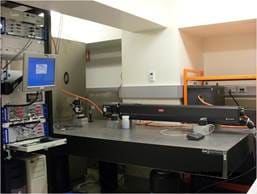
Fibre Bragg Grating writing stage
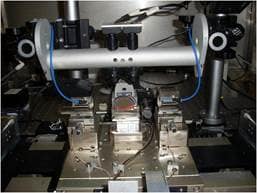
Overview of Fibre Bragg Grating writing facilities
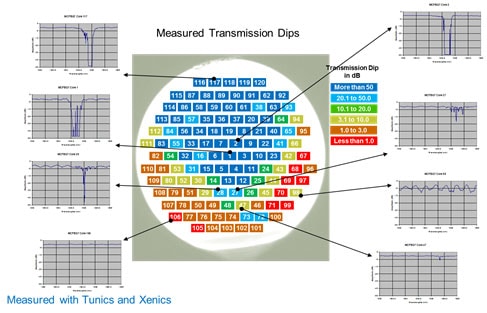
Related Papers
Hexabundles are a type of hexagonal fibre arrangement where the fibres are either squeezed together so that there are no gaps in between (fused hexabundle) or are held together by a low stress glue (unfused hexabundle). These will replace components in modern multi-fibre systems.
Hexabundle fibres are (usually) hexagonal optical fibre bundles with independent cores. This means that the each component fibre individually collects light, which can then be fed into a spectrometer. The bundles are composed up a number of multimode fibres, ranging from 19 to over 500 fibres per bundle.
At the University of Sydney, we develop, build and characterise hexabundles for astronomical applications, using our advanced glass processing facility. Detailed focal ratio degradation testing of our hexabundles confirm that they are a successful alternative to fibre imaging devices for multi-object spectroscopy on wide-field telescopes and have prompted further development of hexabundle designs with hexagonal packing and square cores.
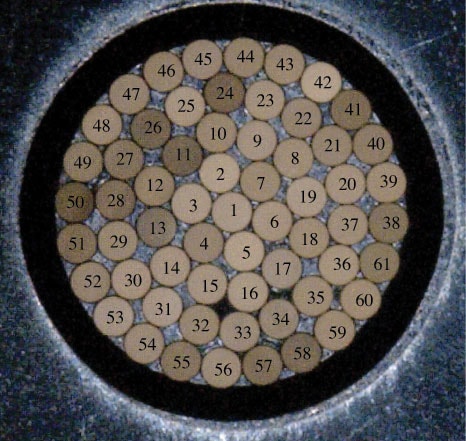
61 core heaxbundle
Related papers:
- Bland-Hawthorn, J., Lawrence, J., Robertson, G., Campbell, S., Pope, J. J. Bryant, J. Bland-Hawthorn, L. M. R. Fogarty, J. S. Lawrence
and S. M. Croom: Focal ratio degradation in lightly-fused hexabundles, Mon. Not. R. Astron. Soc. 438, Issue 1, p.869-877 (2014). - Julia J. Bryant & Joss Bland-Hawthorn: Square-core bundles for astronomical imaging, Proc. SPIE, 8446, article id. 84466K, 10 pp. (2012).
One approach to the problem of rising cost and complexity in telescopes as their size increases is to feed the fibres into individual spectrographs rather than one huge (and expensive) spectrograph.
Why do integrated devices need to be developed?
As astronomers design and build increasingly large and complex telescopes, a new device with a low cost and small size is needed if extremely large telescopes are to be built. If current technology is simply up-scaled, the expense and complexity become limiting factors in the creation of ELTs. These devices would likely be used for multi-object spectroscopy
Integrated optical devices
As a result, Astrophotonics looks at developing a solution: an optical device with a variety of functions that can be produced on a small (tens of millimetres in size) chip. Currently, several successful single mode IO systems have been shown to work with existing interferometers. The benefits of these systems are many and varied: easy installation, better interferometer resolution, increased flexibility, better instrument stability, and reduced overall cost and complexity.
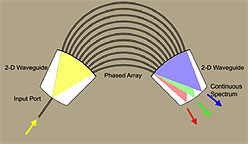
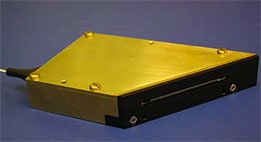
Future possibilities
Systems operating with multimode fibres are currently being developed by various groups around the world. Advances in 3D optical circuitry would overcome some of the drawbacks associated with planar optics in the current systems. Another consideration is the integration of OH suppressed fibres into the input fibre. Researchers envisage devices with resolutions R = 250, 500, 1000, 2000, possibly integrated into an IR array. While currently the research is largely focused on spectroscopy, multi-purpose devices are the next step in integrated optics technology.
Technology in the Integrated Photonic Spectrograph
The devices under development at the University of Sydney are built around an array waveguide grating (AWG). The other primary potential technology is the photonic echelle grating, but difficulties encountered in production have made AWGs the primary focus. Both PEGs and AWGs originate in the telecommunications industry, but astronomy requires different manufacturing specifications. The AWG acts as a multiplexor (mux) feeding light from an input fibre (single mode, usually) into an optical phased array waveguide (which acts like the grating on a conventional spectrograph). This connects to another AWG, the demultiplexor (demux) which produces the spectra, imaged through output fibres. While the devices may be expensive individually, when taken as whole, the cost decreases exponentially, as each spectrograph potentially performs a variety of functions and can be easily rewired into a number of configurations.
- Related Papers:
Joss Bland-Hawthorn and Pierre Kern, "Astrophotonics: a new era for astronomical instruments," Opt. Express 17, 1880-1884 (2009). - Joss Bland-Hawthorn and Anthony Horton, "Instruments without optics: an integrated photonic spectrograph," Proceedings of the SPIE, Volume 6269, pp. 62690N (2006).
Orbital Angular Momentum (OAM) has recently been investigated as a fundamental property of photons and has already found a number of applications. In astrophysics, it has been shown that by detecting the OAM of photons scattered from rotating objects, the rate of rotation can be measured.
The photonic lantern has been developed as a solution to the problem of working with single and multimode fibres in conjunction. This is a technology with many potential applications, not only in astrophysics and astronomy.
The problem:
In order to use many emerging and existing technologies (such as fibre Bragg gratings) effectively within an optical system, a method for going from single to multimode fibres and vice versa was needed. Multimode fibres (MMFs), along which multiple wavelengths can propagate, are used to collect incoming light, while single mode fibres (SMFs) are needed to isolate individual wavelengths to feed into a spectrometer. However, many optical devices (such as FBGs) used successfully in single-mode fibres exhibit very poor performance when applied to multimode fibres.
The solution:
A new device has been developed that is able to split multimode fibres into a large number of single mode fibres. This has been dubbed the photonic lantern, and has many possible applications in communications and sensory equipment as well as astronomy and astrophysics. So far, a photonic lantern has been produced, supporting a 19 SMF-1 MMF transition has been produced with coupling losses of only 0.32 dB.
A proposed instrument, FLEX (First Light EXplorer) designed for 8m telescopes, will incorporate the photonic lantern as part of its OH suppression system.
Related Papers:
- S. G. Leon-Saval, T. A. Birks, J. Bland-Hawthorn, and M. Englund, "Multimode fiber devices with single-mode performance," Opt. Lett. 30, 2545-2547 (2005)
- Danny Noordegraaf, Peter M. Skovgaard, Martin D. Nielsen, and Joss Bland-Hawthorn, "Efficient multi-mode to single-mode coupling in a photonic lantern," Opt. Express 17, 1988-1994 (2009)
Planar Waveguides
These waveguides combine the signals from the component telescopes of an interferometry array, which are connected by an optical network.
Laser Frequency Combs
Frequency combs allow astronomers to detect extrasolar planets by comparing the oscillation of the observed star’s line spectrum with a fixed predicted spectrum, mapped using a laser.
Adaptive Optics
The images of most objects picked up by telescopes are badly distorted by the medium in between the source and the receiver. Adaptive optics attempts to correct this.
Artificial Star Generation
A close by reference point is required in order to use adaptive optics technology. If a bright celestial object is nearby, this makes observations much simpler, but normally an artificial “guide star” is required, and is generated by a powerful laser exciting molecules in the upper atmosphere.
Liquid Crystal Polymers
Liquid crystal polymers are used in adaptive optics as the “adaptive” part, as they can be deformed depending on the nature of the correction being made by the system.
Fibre Positioning Technology
Research continues to go into the robotic fibre positioning systems used to move fibres around on the spectroscopy plates to observe the desired area of sky. The AAO produces many fibre positioners for use in instruments across the world, such as OzPoz and ECHIDNA.

Instruments
The PIMMS concept harnesses the photonic lantern, which enables the efficient conversion of an essentially arbitrary input (e.g. a combination of arbitrarily excited modes) to the consistent and diffraction-limited format of single-mode fibres. This essentially allows us to remap the extent of a spectrograph slit, minimising the width while conserving the effective étendue.
There are some key advantages to using a slit form using a phonic lantern:
- As the single-mode fibres are by definition diffraction limited, the resulting a spectrograph spectral resolution is also diffraction limited (i.e. the slit width is no longer the limiting factor in the spectrograph resolution equation).
- The spectrograph design is decoupled from the light source at the MM input. This is because the beam from a single-mode fibre output of the lantern remains fundamentally unchanged regardless of the source at the MM input.
- The conversion also allows other single-mode photonic technologies to be incorporated into new and pre-existing spectrographs, the most successful so far being fibre Bragg gratings for sky OH suppression.
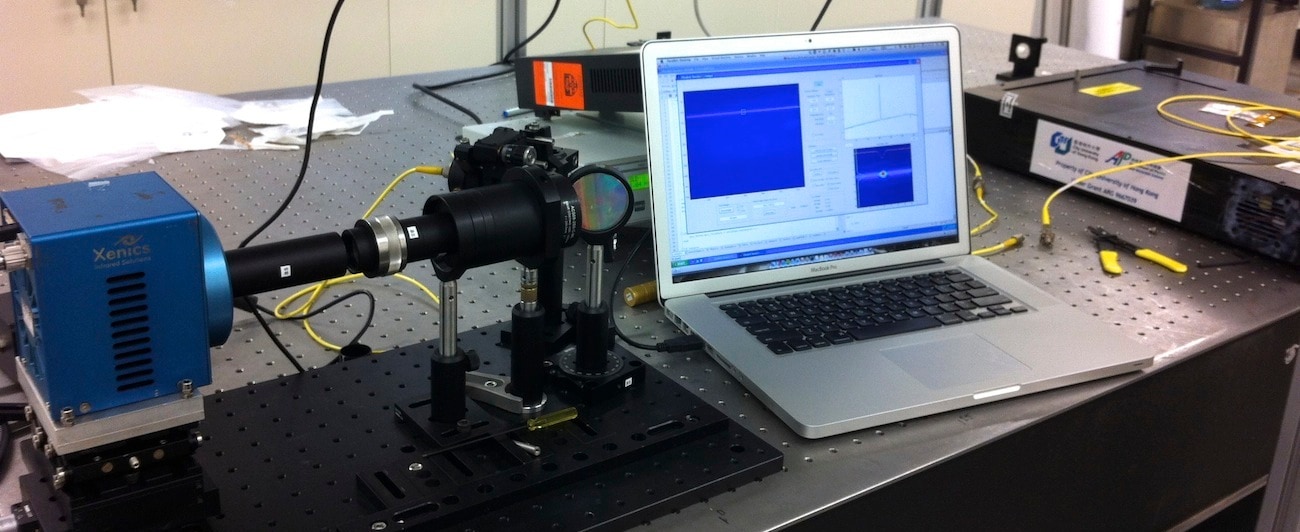
Our PIMMS comes in two flavours. The first, dubbed PIMMS#0 is a hybrid of a classical spectrograph design and photonics This approach uses the photonic lantern to form the slit for a compact bulk optic spectrograph. Our first implementation (seen below) operates over 1545-1555 nm (limited by the detector) with a spectral resolution of 0.055nm (R~30,000) using a 1x7 (1 multi-mode input to 7 single-mode outputs) photonic lantern.
The next generation of PIMMS#0 is an echelle based based design operating in the visible. It is designed to operates over 630-730 nm, with a spectral resolution 10 pm (R~60,000) using a 1x19 (1 multi-mode input to 19 single-mode outputs) photonic lantern.
The second is a fully photonic approach, combining the photonic lantern and an arrayed wave guide grating (spectrograph on a chip).
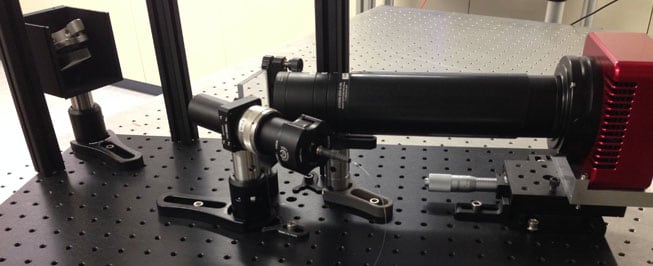
SAMI is an exciting new instrument borne of a fruitful collaboration between the Sydney Institute for Astronomy (SIfA) and the Australian Astronomical Observatory (AAO). SAMI is a multiplexed integral field instrument based on hexabundle technology.
Traditional astronomical spectrographs use a single slit or optical fibre to gather light from a single object. This means that an astronomer can measure only one spectrum from one object at a time. Some multiplexed instruments (such as 2dF) use many slits or fibres to measure the spectrum of many objects at once, greatly improving the efficiency of spectroscopic observations.
For spatially resolved objects, such as galaxies, an astronomer would often like to measure a spectrum at various different points on the object. It is possible to do this by stepping the single slit or fibre across the object of interest and measuring a spectrum at each position of interest. This technique has been used with some success but is very time consuming and prone to inaccuracies, especially when trying to study many objects in this way.
An integral field unit (or IFU) is a device that enables spectroscopy to be performed in a spatially resolved manner in one exposure, negating the need to step across the object. The SAMI IFUs are hexabundles – bundles of 61 optical fibres lightly fused together to form and imaging bundle with a high fill factor. Each of these 61 fibres can gather light from a different part of a galaxy. SAMI has 13 hexabundles, deployable over a wide (1 degree) field of view, each of which can simultaneously observe a different galaxy in the field.
The spatially resolved spectroscopy enabled by the SAMI instrument allows astronomers to measure a wide range of key physical parameters, such as dynamical mass, angular momentum, the location of star formation and many others. It also removes the biases inherent in single fibre studies of the same kind.
SAMI was built at the University of Sydney and the AAO and commissioned at the Anglo-Australian Telescope (AAT) in July 2011. The commissioning was a huge success with SAMI observing both stars and galaxies. The galaxy data was used to demonstrate that SAMI is capable of measuring internal kinematics of galaxies and resolving spatial variations in key diagnostic emission lines.
These results bode extremely well for the prospect of carrying out major new surveys with SAMI, potentially targeting thousands of galaxies with spatially resolved spectroscopy.
More information about the SAMI Survey